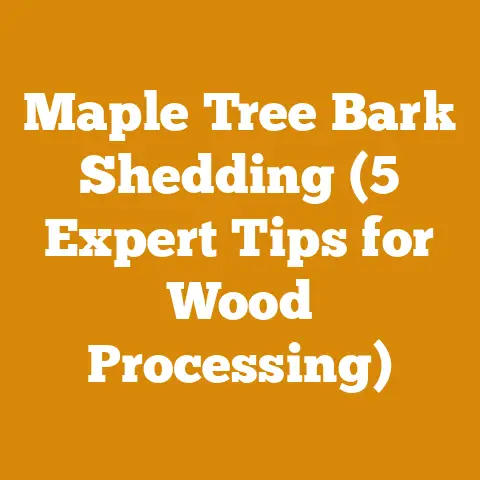R Hearth Construction Tips (7 Pro Techniques for Durability)
Alright folks, gather ’round! Building a hearth ain’t rocket science, but it’s definitely more than just stacking rocks and hoping for the best. I’ve seen some real doozies in my time – hearths that crumble faster than a gingerbread house in a hurricane. So, let’s talk R Hearth Construction Tips (7 Pro Techniques for Durability). I’m going to share my secrets, the hard-won wisdom I’ve gleaned from years of wrestling logs and swearing at mortar. Get ready to build a hearth that’ll last longer than your in-laws’ visit.
R Hearth Construction Tips (7 Pro Techniques for Durability)
Building a durable hearth is about more than just aesthetics. It’s about safety, longevity, and creating a focal point that will last for generations. In this guide, I’ll walk you through seven pro techniques that’ll ensure your hearth stands the test of time.
1. Site Preparation: Laying a Solid Foundation
Before you even think about laying the first stone, you need to prepare the site properly. A solid foundation is the bedrock of any durable hearth. I’ve seen too many beautiful hearths ruined by settling and cracking because the ground underneath wasn’t properly prepared.
- Excavation: Start by excavating the area where your hearth will sit. The depth will depend on your soil conditions and the size of the hearth, but I generally recommend digging down at least 12 inches. This removes any organic matter that will decompose and cause settling.
- Compaction: Once you’ve excavated, compact the soil thoroughly. A plate compactor is ideal for this, but a hand tamper can work in a pinch. Compact in layers, adding about 4-6 inches of soil at a time and compacting each layer before adding the next. This creates a dense, stable base.
- Gravel Base: Add a layer of gravel, typically 4-6 inches thick. This gravel layer provides drainage, preventing water from accumulating under the hearth and causing problems. Use a well-graded gravel that compacts well. I prefer a mix of ¾ inch down to fines.
- Leveling: Ensure the gravel base is perfectly level. Use a level and a long straightedge to check for any high or low spots. This is crucial for ensuring your hearth is stable and doesn’t settle unevenly. I remember one time I rushed this step and ended up with a hearth that sloped so much, my coffee cup kept sliding off!
- Reinforcement (Optional): For larger hearths, consider adding a layer of wire mesh reinforcement before pouring the concrete slab. This adds extra strength and prevents cracking.
Takeaway: A well-prepared site is the foundation of a durable hearth. Don’t skip this step! Neglecting this part will come back to haunt you.
2. Concrete Slab: The Heart of the Hearth
The concrete slab is the heart of your hearth. It provides a solid, fire-resistant surface for your stove or fireplace. I’ve seen some people try to cut corners here, using thin slabs or skipping reinforcement. Trust me, it’s not worth it. A properly constructed concrete slab is an investment in the longevity of your hearth.
- Formwork: Build sturdy formwork to contain the concrete. Use lumber that is straight and true, and ensure the forms are level and square. I typically use 2×6 lumber for my forms, and I brace them well to prevent them from bowing out under the weight of the concrete.
- Reinforcement: Reinforce the concrete slab with steel rebar or wire mesh. This adds tensile strength and prevents cracking. I typically use ½ inch rebar spaced 12 inches apart in both directions. For larger hearths, consider using a double layer of rebar. I once worked on a project where the client insisted on skipping the rebar to save money. Within a year, the hearth had cracked in multiple places.
- Concrete Mix: Use a high-quality concrete mix that is designed for outdoor use. I recommend a mix with a compressive strength of at least 3000 psi. Follow the manufacturer’s instructions for mixing and pouring the concrete.
- Pouring: Pour the concrete into the forms, ensuring it fills all the corners and voids. Use a vibrator to consolidate the concrete and remove any air pockets. This will create a denser, stronger slab.
- Finishing: Once the concrete is poured, level it with a screed board and smooth it with a trowel. You can also add a textured finish for a more decorative look. I often use a broom finish for a non-slip surface.
- Curing: Allow the concrete to cure properly. This is crucial for achieving maximum strength and durability. Keep the concrete moist for at least seven days by covering it with plastic sheeting or spraying it with water regularly.
Takeaway: A well-reinforced and properly cured concrete slab is essential for a durable hearth. Don’t skimp on the materials or the curing process.
3. Stone Selection: Choosing the Right Material
The type of stone you choose for your hearth will have a significant impact on its durability and appearance. Not all stones are created equal. Some are more porous and susceptible to damage from water and freeze-thaw cycles. I’ve learned the hard way that choosing the wrong stone can lead to costly repairs down the road.
- Durability: Choose a stone that is durable and resistant to weathering. Granite, slate, and quartzite are all excellent choices. Avoid softer stones like sandstone or limestone, which are more prone to erosion. I once used a beautiful sandstone for a hearth, and within a few years, it had started to crumble and flake.
- Fire Resistance: Ensure the stone is fire-resistant. Some stones can crack or explode when exposed to high temperatures. Granite and slate are generally safe choices for hearths that will be exposed to direct heat.
- Porosity: Choose a stone with low porosity. Porous stones absorb water, which can freeze and expand, causing the stone to crack. Granite and slate are less porous than sandstone or limestone.
- Appearance: Consider the appearance of the stone and how it will complement your home’s style. Choose a stone that you find aesthetically pleasing and that will enhance the overall look of your hearth. I personally prefer the natural look of slate or granite, but there are many other beautiful stones to choose from.
- Sourcing: Source your stone from a reputable supplier. This will ensure you are getting high-quality stone that is free from defects. I always inspect the stone carefully before purchasing it to make sure it meets my standards.
Takeaway: Choosing the right stone is crucial for the durability and appearance of your hearth. Consider durability, fire resistance, porosity, and appearance when making your selection.
4. Mortar Selection: Binding it All Together
The mortar you use to set your stones is just as important as the stones themselves. The mortar is the glue that holds everything together, and it needs to be strong, durable, and resistant to the elements. I’ve seen some beautiful stone hearths ruined by using the wrong type of mortar.
- Type S Mortar: Use Type S mortar for hearth construction. Type S mortar is stronger than Type N mortar and is designed for use in load-bearing applications. It also has better resistance to freeze-thaw cycles.
- Mixing: Mix the mortar according to the manufacturer’s instructions. Add water gradually until you achieve a smooth, workable consistency. Avoid adding too much water, as this will weaken the mortar.
- Application: Apply the mortar liberally to the back of each stone and to the surface of the concrete slab. Ensure there is good contact between the stone and the slab.
- Joints: Fill the joints between the stones with mortar, using a pointing trowel to create a smooth, even finish. I prefer a recessed joint for a more rustic look.
- Curing: Keep the mortar moist for at least 72 hours to allow it to cure properly. This will ensure it achieves maximum strength and durability. I usually cover the hearth with plastic sheeting and spray it with water regularly.
Takeaway: Using the right type of mortar and applying it properly is essential for a durable hearth. Don’t cut corners on the mortar.
5. Drainage: Keeping Water Away
Water is the enemy of any masonry structure. It can seep into cracks and crevices, freeze and expand, and cause the stone and mortar to deteriorate. Proper drainage is essential for preventing water damage and ensuring the longevity of your hearth.
- Slope: Ensure the ground around the hearth slopes away from the structure. This will help to divert water away from the hearth and prevent it from pooling around the base.
- Drainage System: Consider installing a drainage system around the hearth to collect and remove any water that does accumulate. This can be as simple as a French drain or as elaborate as a buried drainage pipe.
- Waterproofing: Apply a waterproofing sealant to the hearth to prevent water from penetrating the stone and mortar. Choose a sealant that is designed for use on masonry surfaces and that is resistant to UV light. I’ve had good results with silane-siloxane sealants.
- Overhang: Design the hearth with an overhang to protect the stone and mortar from rain and snow. This will help to keep the hearth dry and prevent water damage.
Takeaway: Proper drainage is essential for preventing water damage and ensuring the longevity of your hearth. Take steps to divert water away from the structure.
6. Expansion Joints: Accommodating Movement
Masonry structures expand and contract with changes in temperature and humidity. If you don’t provide expansion joints, the stress can cause the stone and mortar to crack. Expansion joints allow the hearth to move without cracking.
- Placement: Place expansion joints in areas where the hearth is likely to experience the most movement. This typically includes long, continuous runs of stone and areas where the hearth abuts other structures.
- Materials: Use a flexible sealant to fill the expansion joints. Choose a sealant that is designed for use on masonry surfaces and that is resistant to UV light and weathering.
- Width: Ensure the expansion joints are wide enough to accommodate the expected movement. Consult with a structural engineer or a masonry expert to determine the appropriate width for your specific project.
Takeaway: Expansion joints allow the hearth to move without cracking. Don’t forget to include them in your design.
7. Sealing and Maintenance: Protecting Your Investment
Once your hearth is built, it’s important to protect your investment by sealing it and performing regular maintenance. Sealing the hearth will help to prevent water damage and staining, while regular maintenance will keep it looking its best for years to come.
- Sealing: Apply a high-quality sealant to the hearth to protect it from water damage and staining. Choose a sealant that is designed for use on masonry surfaces and that is resistant to UV light. I typically apply a silane-siloxane sealant every few years.
- Cleaning: Clean the hearth regularly with a mild soap and water solution. Avoid using harsh chemicals or abrasive cleaners, as these can damage the stone and mortar.
- Inspection: Inspect the hearth regularly for cracks, loose stones, or other signs of damage. Repair any damage promptly to prevent it from getting worse.
- Re-pointing: Re-point the mortar joints as needed. This involves removing the old, deteriorated mortar and replacing it with new mortar. This will help to keep the hearth watertight and prevent water damage.
Takeaway: Sealing and regular maintenance will protect your investment and keep your hearth looking its best for years to come. Don’t neglect these important steps.
Building a durable hearth is a rewarding project that will add beauty and value to your home. By following these seven pro techniques, you can ensure that your hearth stands the test of time. Remember to take your time, pay attention to detail, and don’t be afraid to ask for help if you need it. And most importantly, enjoy the process! After all, you’re building a hearth that will be a gathering place for family and friends for generations to come. Now, go get building!






